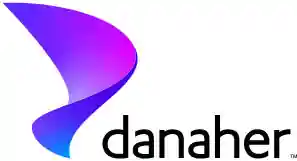
Floating Wind Turbine Market Growth, Size, Trends, Revenue, Challenges and Future Competition
Floating Wind Turbine Market Size- By Foundation, By Turbine Capacity, By Application, By Water Depth- Regional Outlook, Competitive Strategies and Segment Forecast to 2033
| Published: Aug-2023 | Report ID: POAE2354 | Pages: 1 - 242 | Formats*: |
| Category : Power & Energy | |||
- Advancements in Technology: The expansion of the market is being fuelled by ongoing advances in floating wind turbine technology. Improvements in floating wind turbine efficiency, cost reduction, and performance are being made thanks to advancements in turbine design, materials, and floating platforms.
- Competitiveness and Cost Reduction: The industry is concentrating on bringing down the price of floating wind turbines to increase their competitiveness versus conventional energy sources. Cost-cutting strategies include increasing output, improving designs, and enhancing installation and maintenance procedures.


| Report Metric | Details |
| Market size available for years | 2019-2033 |
| Base year considered | 2022 |
| Forecast period | 2023-2033 |
| Segments covered | By Foundation, By Turbine Capacity, By Application, By Water Depth |
| Regions covered | Asia-Pacific, Europe, Middle East and Africa, North America, Latin America, Others |
| Companies Covered | General Electric (U.S.), MHI Vestas Offshore Wind (Denmark), Siemens Gamesa Renewable (Spain), Goldwind (China), Shanghai Electric (China), ABB Group (Switzerland), Doosan Corporation (South Korea), Hitachi Ltd. (Japan), Nordex SE (Germany), EEW Group (Germany), Nexans (France), DEME (Belgium), Suzlon Energy Limited(India), Ming Yang Smart Energy Group Co (China), Envision Energy (China), Rockwell Automation Inc., (U.S.), Hyundai Motor Company (South Korea), Schneider Electric (France) Others. |
- Energy Companies and Utilities
- Government and Regulatory Bodies
- Project Developers and Investors
- Manufacturers and Suppliers
- Research and Development Institutions
- Environmental and Conservation Organizations
- Offshore Infrastructure Developers
- Power Grid Operators and Transmission Companies
- Consultants and Advisory Firms
| By Foundation: |
|
| By Turbine Capacity: |
|
| By Application: |
|
| By Water Depth: |
|
- Global Floating Wind Turbine Market Size (FY’2023-FY’2033)
- Overview of Global Floating Wind Turbine Market
- Segmentation of Global Floating Wind Turbine Market By Foundation (Semi-submersible Foundation, Spar-buoy Foundation, Tension-leg platform (TLP) Foundation, Others)
- Segmentation of Global Floating Wind Turbine Market By Turbine Capacity (Up to 1 MW, 1 MW-3 MW, 3 MW-5 MW, Above 5 MW)
- Segmentation of Global Floating Wind Turbine Market By Application (Commercial, Industrial, Others)
- Segmentation of Global Floating Wind Turbine Market By Water Depth (Deep Water, Shallow Water, Transitional water)
- Statistical Snap of Global Floating Wind Turbine Market
- Expansion Analysis of Global Floating Wind Turbine Market
- Problems and Obstacles in Global Floating Wind Turbine Market
- Competitive Landscape in the Global Floating Wind Turbine Market
- Impact of COVID-19 and Demonetization on Global Floating Wind Turbine Market
- Details on Current Investment in Global Floating Wind Turbine Market
- Competitive Analysis of Global Floating Wind Turbine Market
- Prominent Players in the Global Floating Wind Turbine Market
- SWOT Analysis of Global Floating Wind Turbine Market
- Global Floating Wind Turbine Market Future Outlook and Projections (FY’2023-FY’2033)
- Recommendations from Analyst
1.1. Scope of the report1.2. Market segment analysis
2.1. Research data source
2.1.1. Secondary Data2.1.2. Primary Data2.1.3. SPER’s internal database2.1.4. Premium insight from KOL’s
2.2. Market size estimation
2.2.1. Top-down and Bottom-up approach
2.3. Data triangulation
4.1. Driver, Restraint, Opportunity and Challenges analysis
4.1.1. Drivers4.1.2. Restraints4.1.3. Opportunities4.1.4. Challenges
4.2. COVID-19 Impacts of the Global Floating Wind Turbine Market
5.1. SWOT Analysis
5.1.1. Strengths5.1.2. Weaknesses5.1.3. Opportunities5.1.4. Threats
5.2. PESTEL Analysis
5.2.1. Political Landscape5.2.2. Economic Landscape5.2.3. Social Landscape5.2.4. Technological Landscape5.2.5. Environmental Landscape5.2.6. Legal Landscape
5.3. PORTER’s Five Forces
5.3.1. Bargaining power of suppliers5.3.2. Bargaining power of buyers5.3.3. Threat of Substitute5.3.4. Threat of new entrant5.3.5. Competitive rivalry
5.4. Heat Map Analysis
6.1. Global Floating Wind Turbine Market Manufacturing Base Distribution, Sales Area, Product Type6.2. Mergers & Acquisitions, Partnerships, Product Launch, and Collaboration in Global Floating Wind Turbine Market
7.1. Global Floating Wind Turbine Market Value Share and Forecast, By Foundation, 2023-20337.2. Semi-submersible Foundation7.3. Spar-buoy Foundation7.4. Tension-leg platform (TLP) Foundation7.5. Others
8.1. Global Floating Wind Turbine Market Value Share and Forecast, By Turbine Capacity, 2023-20338.2. Up to 1 MW8.3. 1 MW-3 MW8.4. 3 MW-5 MW8.5. Above 5 MW
9.1. Global Floating Wind Turbine Market Value Share and Forecast, By Application, 2023-20339.2. Commercial9.3. Industrial9.4. Others
10.1. Global Floating Wind Turbine Market Value Share and Forecast, By Water Depth, 2023-203310.2. Deep Water10.3. Shallow Water10.4. Transitional water
11.1. Global Floating Wind Turbine Market Size and Market Share
12.1. Global Floating Wind Turbine Market Size and Market Share By Foundation (2019-2026)12.2. Global Floating Wind Turbine Market Size and Market Share By Foundation (2027-2033)
13.1. Global Floating Wind Turbine Market Size and Market Share By Turbine Capacity (2019-2026)13.2. Global Floating Wind Turbine Market Size and Market Share By Turbine Capacity (2027-2033)
14.1. Global Floating Wind Turbine Market Size and Market Share By Application (2019-2026)14.2. Global Floating Wind Turbine Market Size and Market Share By Application (2027-2033)
15.1. Global Floating Wind Turbine Market Size and Market Share By Water Depth (2019-2026)15.2. Global Floating Wind Turbine Market Size and Market Share By Water Depth (2027-2033)
16.1. Global Floating Wind Turbine Market Size and Market Share By Region (2019-2026)16.2. Global Floating Wind Turbine Market Size and Market Share By Region (2027-2033)16.3. Asia-Pacific
16.3.1. Australia16.3.2. China16.3.3. India16.3.4. Japan16.3.5. South Korea16.3.6. Rest of Asia-Pacific
16.4. Europe
16.4.1. France16.4.2. Germany16.4.3. Italy16.4.4. Spain16.4.5. United Kingdom16.4.6. Rest of Europe
16.5. Middle East and Africa
16.5.1. Kingdom of Saudi Arabia16.5.2. United Arab Emirates16.5.3. Rest of Middle East & Africa
16.6. North America
16.6.1. Canada16.6.2. Mexico16.6.3. United States
16.7. Latin America
16.7.1. Argentina16.7.2. Brazil16.7.3. Rest of Latin America
17.1. General Electric (U.S.)
17.1.1. Company details17.1.2. Financial outlook17.1.3. Product summary17.1.4. Recent developments
17.2. MHI Vestas Offshore Wind (Denmark)
17.2.1. Company details17.2.2. Financial outlook17.2.3. Product summary17.2.4. Recent developments
17.3. Siemens Gamesa Renewable (Spain)
17.3.1. Company details17.3.2. Financial outlook17.3.3. Product summary17.3.4. Recent developments
17.4. Goldwind (China)
17.4.1. Company details17.4.2. Financial outlook17.4.3. Product summary17.4.4. Recent developments
17.5. Shanghai Electric (China)
17.5.1. Company details17.5.2. Financial outlook17.5.3. Product summary17.5.4. Recent developments
17.6. ABB Group (Switzerland)
17.6.1. Company details17.6.2. Financial outlook17.6.3. Product summary17.6.4. Recent developments
17.7. Doosan Corporation (South Korea)
17.7.1. Company details17.7.2. Financial outlook17.7.3. Product summary17.7.4. Recent developments
17.8. Hitachi Ltd. (Japan)
17.8.1. Company details17.8.2. Financial outlook17.8.3. Product summary17.8.4. Recent developments
17.9. Nordex SE (Germany)
17.9.1. Company details17.9.2. Financial outlook17.9.3. Product summary17.9.4. Recent developments
17.10. EEW Group (Germany)
17.10.1. Company details17.10.2. Financial outlook17.10.3. Product summary17.10.4. Recent developments
17.11. Nexans (France)
17.11.1. Company details17.11.2. Financial outlook17.11.3. Product summary17.11.4. Recent developments
17.12. DEME (Belgium)
17.12.1. Company details17.12.2. Financial outlook17.12.3. Product summary17.12.4. Recent developments
17.13. Suzlon Energy Limited (India)
17.13.1. Company details17.13.2. Financial outlook17.13.3. Product summary17.13.4. Recent developments
17.14. Ming Yang Smart Energy Group Co (China)
17.14.1. Company details17.14.2. Financial outlook17.14.3. Product summary17.14.4. Recent developments
17.15. Envision Energy (China)
17.15.1. Company details17.15.2. Financial outlook17.15.3. Product summary17.15.4. Recent developments
17.16. Rockwell Automation Inc., (U.S.)
17.16.1. Company details17.16.2. Financial outlook17.16.3. Product summary17.16.4. Recent developments
17.17. Hyundai Motor Company (South Korea)
17.17.1. Company details17.17.2. Financial outlook17.17.3. Product summary17.17.4. Recent developments
17.18. Schneider Electric (France)
17.18.1. Company details17.18.2. Financial outlook17.18.3. Product summary17.18.4. Recent developments
17.19. Others
SPER Market Research’s methodology uses great emphasis on primary research to ensure that the market intelligence insights are up to date, reliable and accurate. Primary interviews are done with players involved in each phase of a supply chain to analyze the market forecasting. The secondary research method is used to help you fully understand how the future markets and the spending patterns look likes.
The report is based on in-depth qualitative and quantitative analysis of the Product Market. The quantitative analysis involves the application of various projection and sampling techniques. The qualitative analysis involves primary interviews, surveys, and vendor briefings. The data gathered as a result of these processes are validated through experts opinion. Our research methodology entails an ideal mixture of primary and secondary initiatives.
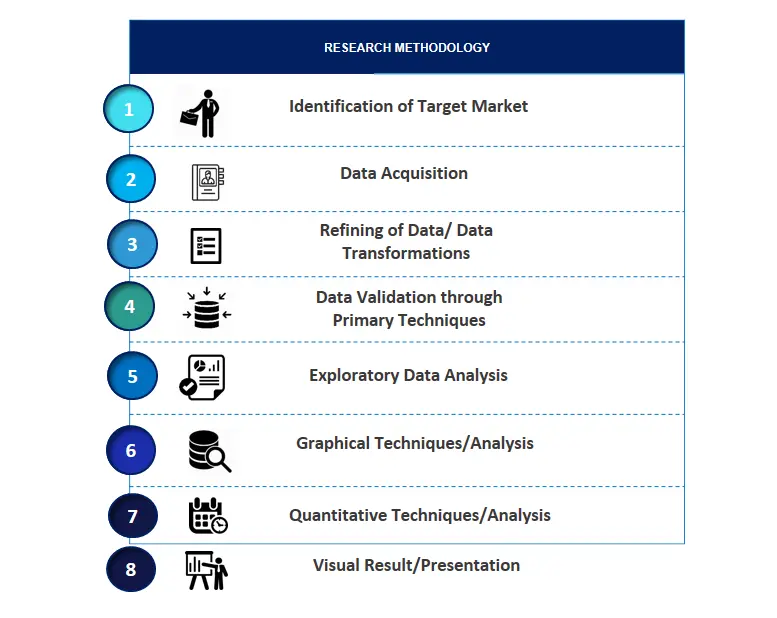
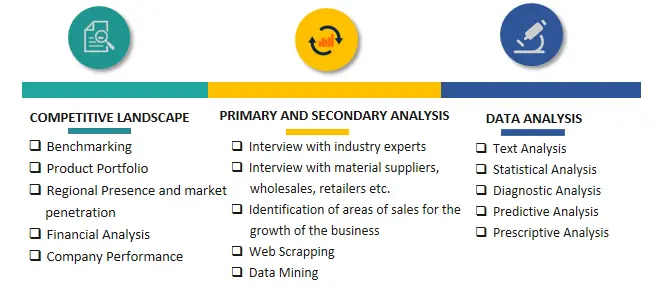

Frequently Asked Questions About This Report
PLACE AN ORDER
Year End Discount
Sample Report
Pre-Purchase Inquiry
NEED CUSTOMIZATION?
Request CustomizationCALL OR EMAIL US
100% Secure Payment
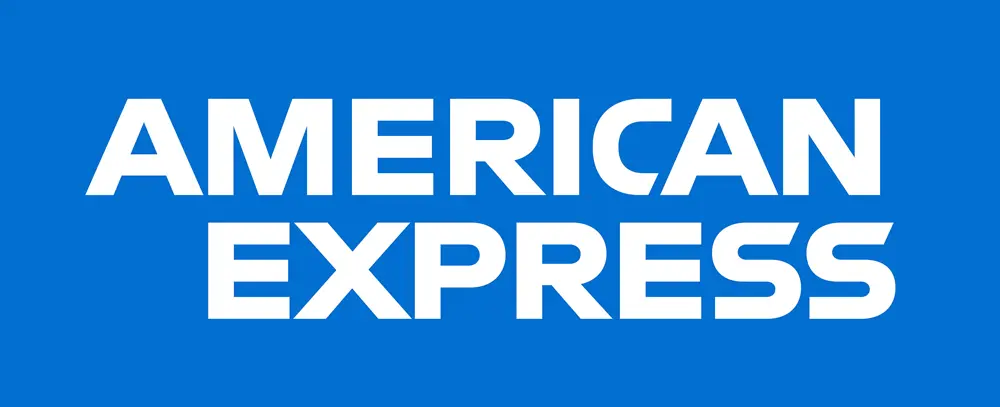
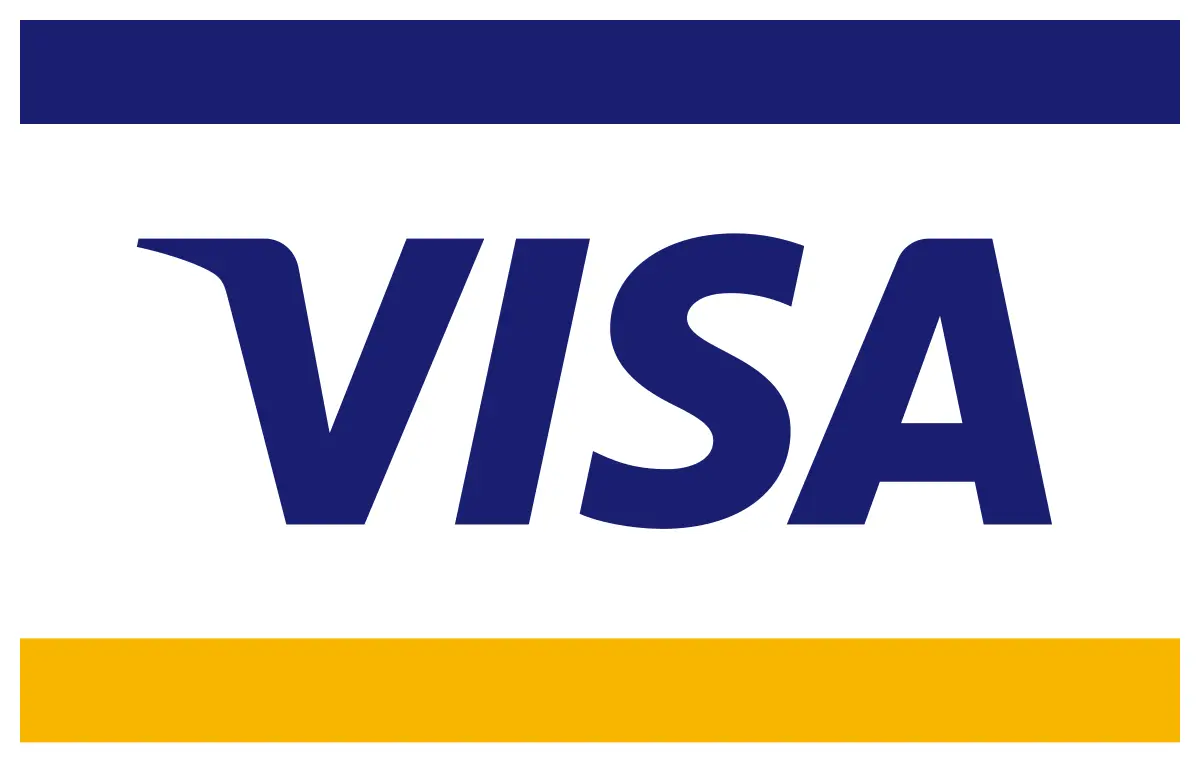




Related Reports
Our Global Clients
Our data-driven insights have influenced the strategy of 200+ reputed companies across the globe.



















